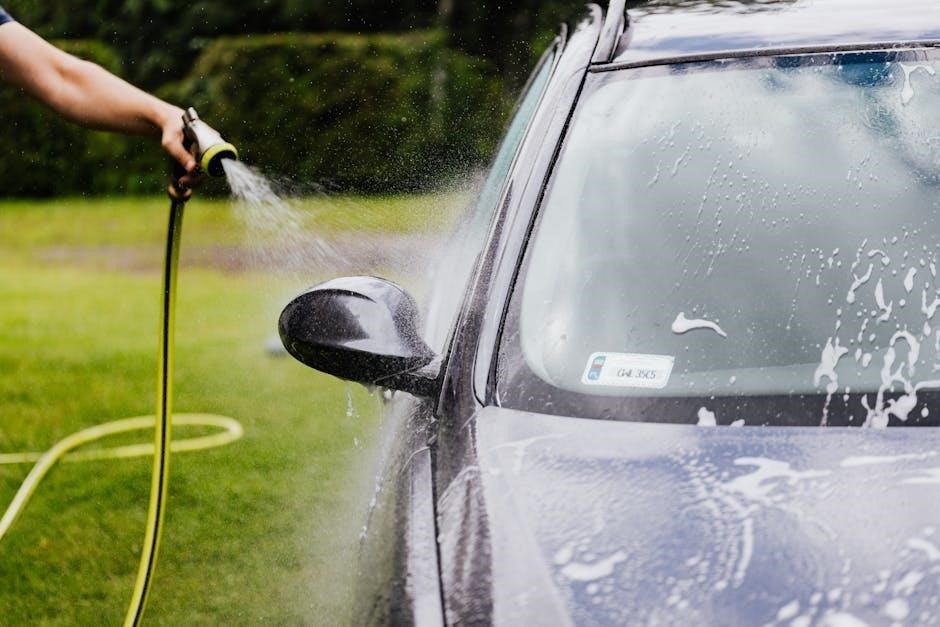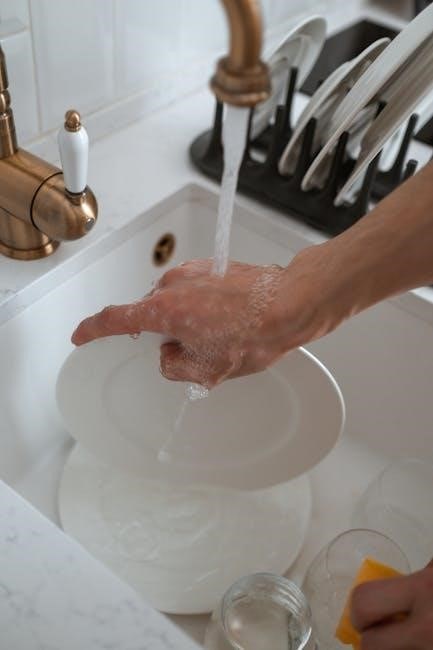Manual Water Pump for Well: A Comprehensive Guide
This guide provides a comprehensive overview of manual water pumps for deep wells. It covers their types, working principles, advantages, disadvantages, and factors to consider when choosing one for your well. It provides easier access to water.

In an era marked by increasing concerns about energy dependence and environmental sustainability, manual water pumps have emerged as a practical and sustainable solution for water access in a variety of settings. A manual water pump draws water from underground wells and delivers it to the surface for use in homes, businesses, and farms. These pumps utilize human power and mechanical advantage to move fluids or air from one place to another, providing a reliable water source independent of electricity. They are particularly useful in remote areas without access to electricity or as a backup system during power outages. They do not require electricity to supply water and are competitively priced. Manual water pumps are easy to install and are very resistant; The main advantage of hand pumps is that they are one of the most economical and simple solutions for providing water. The benefits of installing a well pump for your home include continuous water availability, cost-effectiveness in the long run, independence from municipal water systems, potential for higher water quality, and environmental sustainability. Hand pumps are manually operated pumps; they use human power and mechanical advantage to move fluids or air from one place to another. Installing a hand pump is far less expensive than installing an electric pump or other water supply. They provide easier access to the water while minimising the risks of water contamination.
Types of Manual Water Pumps
Manual water pumps come in various designs, each suited for different well depths and water requirements. Some common types include lift pumps, suction pumps, and diaphragm pumps. Lift pumps, also known as piston pumps, operate by creating a vacuum that draws water up through a cylinder. These pumps are effective for shallow wells, typically up to 25 feet. Suction pumps work similarly, using a piston to create suction and lift water. They are also best suited for shallow wells. Suction pumps have few moving parts and some models are very reliable. Diaphragm pumps utilize a flexible diaphragm that moves back and forth to displace water. These pumps are known for their ability to handle water with sediment and are often used in situations where water quality may be a concern. There are also deep well hand pumps which theoretically have no limit to which it can extract water. In practice, the depth is limited by the physical power a human being can exert in lifting the column of water, which is around 30 m. Understanding the different types of manual water pumps is crucial for selecting the right one for your specific needs. The choice of pump type depends on factors such as well depth, water table level, and desired water flow rate.

Advantages of Using Manual Water Pumps
Manual water pumps offer several advantages, making them a practical choice for various situations. One of the primary benefits is their independence from electricity. In areas where power outages are frequent or where access to electricity is limited, a manual water pump provides a reliable water source. This is particularly valuable in emergency situations or off-grid living. Another advantage is their cost-effectiveness. Manual pumps have low initial costs, especially when compared to electric pumps. In addition, they do not incur any electricity costs, leading to long-term savings. They are one of the most economical and simple solutions for providing water. Manual pumps are also environmentally friendly, as they do not rely on fossil fuels or contribute to carbon emissions. This makes them a sustainable option for water extraction. Furthermore, manual pumps are generally simple to operate and maintain. With fewer moving parts than electric pumps, they are less prone to breakdowns and easier to repair. This simplicity ensures that even individuals with limited technical knowledge can use and maintain them effectively. Many users also prefer the fresh taste that the water provides. It provides easier access to the water of a well or an aquifer, while minimising the risks of water contamination and child accidents associated with uncovered wells.
Disadvantages of Using Manual Water Pumps
While manual water pumps offer numerous benefits, they also have certain disadvantages that should be considered. One significant drawback is the physical exertion required to operate them. Pumping water manually can be tiring, especially when large volumes of water are needed or when the water source is deep. This can be a limiting factor for individuals with physical limitations or those who require a continuous water supply; Another disadvantage is the limited water output compared to electric pumps. Manual pumps typically deliver water at a slower rate, which may not be sufficient for households with high water demands or for irrigation purposes. Additionally, the depth limitation of manual pumps can be a constraint. Most manual pumps are not suitable for very deep wells, as the effort required to lift water from significant depths becomes impractical. The mechanical parts will have to be inspected and lubricated from time to time. They are not 100% closed which may lead to well contamination. The significant physical exertion required for pumping and the potential difficulty of being supplied with parts is another disadvantage. There is no filtration for the water uplifted from the depth of the ground using these pumps. Furthermore, manual pumps may require more frequent maintenance compared to some electric pumps. The moving parts in a manual pump are subject to wear and tear and may need periodic lubrication or replacement. Finally, the initial cost of installing a manual pump may be higher than expected, especially for high-quality models or those designed for deeper wells.
Depth Limitations of Manual Water Pumps
Manual water pumps, while offering a reliable and off-grid solution for accessing groundwater, are inherently limited by the depth from which they can effectively draw water. This limitation is primarily due to the physics of manual operation and the practical constraints of human effort. The depth limitation of a manual water pump is defined by the amount of physical power a human being can exert in lifting the column of water. Suction pumps, a common type of manual pump, rely on creating a vacuum to draw water upwards. However, atmospheric pressure can only support a column of water up to a theoretical maximum of about 34 feet (10.4 meters) at sea level. In practice, due to friction and inefficiencies in the pump mechanism, the realistic depth limit for suction pumps is typically around 25 feet (7.6 meters). Beyond this depth, the vacuum required to lift the water becomes too strong for manual operation. Lift pumps, another type of manual pump, use a piston or plunger to physically lift the water. While lift pumps can theoretically operate at greater depths than suction pumps, the amount of effort required increases significantly with depth. As the depth increases, the weight of the water column in the pump cylinder becomes heavier, demanding more strength to lift. In practice, the maximum depth for a lift pump is often limited by the physical strength and endurance of the operator. A deep well hand pump theoretically has no limit to which it can extract water. In practice, the depth is limited by the physical power a human being can exert in lifting the column of water, which is around 30 m. The design and construction of the pump also play a role in determining its depth limitations. Pumps with larger diameter cylinders require more effort to operate but can deliver more water per stroke. Pumps with smaller diameter cylinders require less effort but deliver less water. The type of check valves and seals used in the pump can also affect its efficiency and depth capability.
Diaphragm Pumps: Advantages and Disadvantages
Diaphragm pumps represent a distinct category within manual water pumps, offering a unique set of advantages and disadvantages compared to other types like piston or lever-action pumps. These pumps utilize a flexible diaphragm that reciprocates to create pressure and move water. One of the primary advantages of diaphragm pumps is their ability to handle fluids with solid particles or high viscosity without damage. This makes them suitable for wells with silty or sandy water, where abrasive particles can quickly wear down the internal components of other pump types. Diaphragm pumps are also known for their self-priming capabilities, meaning they can start pumping even when the pump chamber is initially empty. This is particularly useful in situations where the water level in the well fluctuates, or the pump has not been used for an extended period. Another key advantage is their resistance to corrosion, as the diaphragm is typically made of a non-reactive material like rubber or plastic. This makes them suitable for wells with acidic or alkaline water, where metal components in other pumps could corrode over time. Diaphragm pumps are considered to pump relatively lightly due to the lack of pulling rods and are corrosion resistant. Their disadvantage is the required maintenance. However, diaphragm pumps also have their disadvantages. They generally have a lower flow rate compared to piston pumps, meaning they deliver less water per stroke. This can be a significant limitation in situations where a large volume of water is needed quickly. The diaphragm itself is a wear item and will eventually need to be replaced, especially with frequent use or when pumping abrasive fluids. Diaphragm pumps may not be suitable for very deep wells. Finally, some users find the pulsating flow of diaphragm pumps to be less desirable than the smoother flow of other pump types.
Maintenance Requirements for Manual Water Pumps
Regular maintenance is crucial for ensuring the longevity and efficient operation of manual water pumps. Neglecting maintenance can lead to reduced performance, increased wear and tear, and eventually, pump failure. The specific maintenance tasks and their frequency will vary depending on the type of manual pump, the water quality, and the intensity of use. However, some general maintenance requirements apply to most manual water pumps. Regular Inspection: A visual inspection of the pump should be conducted regularly, ideally weekly or bi-weekly. Look for signs of leaks, cracks, or corrosion on the pump body, handle, and spout. Check the condition of any seals or gaskets, and replace them if they appear worn or damaged. Inspect the connecting pipes or hoses for any signs of damage or deterioration. Lubrication: Most manual water pumps have moving parts that require regular lubrication to reduce friction and prevent wear. The specific lubrication points and the type of lubricant to use will be specified in the pump’s manual. Generally, lubricating the handle pivot points, piston rod, and any other moving joints with a suitable grease or oil is recommended. Cleaning: Depending on the water quality, sediment and debris can accumulate inside the pump, reducing its efficiency and potentially damaging internal components. Periodically flushing the pump with clean water can help remove these deposits. In areas with hard water, mineral scale buildup can be a problem. Descaling solutions can be used to remove mineral deposits, but it is important to follow the manufacturer’s instructions carefully to avoid damaging the pump. Filter Cleaning: Some manual water pumps are equipped with filters to remove sediment and debris from the water. These filters should be cleaned regularly, as a clogged filter can significantly reduce the pump’s output. The frequency of filter cleaning will depend on the water quality. Component Replacement: Over time, certain components of the manual water pump may wear out and need to be replaced. This includes seals, gaskets, valves, and diaphragms. Keep a supply of spare parts on hand to minimize downtime. Winterization: In cold climates, manual water pumps can be damaged by freezing temperatures. Before the onset of winter, drain the pump completely to prevent ice from forming inside and cracking the pump body or internal components. Insulating the pump can also help protect it from freezing. By following these maintenance guidelines, you can ensure that your manual water pump provides reliable water service for many years.
Factors to Consider When Choosing a Manual Water Pump

Selecting the right manual water pump for your well involves considering several key factors to ensure it meets your specific needs and circumstances. Well Depth: The depth of your well is a primary factor in determining the type of manual pump you need. Suction pumps are generally suitable for shallow wells, typically those with a water table less than 25 feet from the surface. For deeper wells, lift pumps or diaphragm pumps are more appropriate. Water Quality: The quality of the water in your well can affect the pump’s lifespan and performance. If the water contains high levels of sediment, minerals, or corrosive substances, choose a pump made from materials that are resistant to these elements. Consider a pump with a built-in filter to remove sediment and debris. Pumping Volume: Determine the amount of water you need to pump on a daily basis. This will help you choose a pump with the appropriate flow rate. Consider the number of people who will be using the water and their water consumption habits. Ease of Use: Manual water pumps require physical effort to operate, so it’s important to choose a pump that is easy to use for all members of your household. Consider the handle design, pumping mechanism, and overall ergonomics of the pump. Durability and Reliability: Select a pump that is made from high-quality materials and is designed to withstand the rigors of regular use. Look for pumps with a proven track record of durability and reliability. Read reviews from other users to get an idea of the pump’s performance in real-world conditions. Maintenance Requirements: Consider the maintenance requirements of the pump before making a purchase. Choose a pump that is easy to maintain and has readily available spare parts. Regular maintenance will help prolong the pump’s lifespan and ensure its efficient operation. Cost: Manual water pumps range in price from relatively inexpensive to more costly models. Set a budget before you start shopping and compare the features and specifications of different pumps within your price range. Keep in mind that the cheapest pump may not always be the best value in the long run. Climate: In cold climates, choose a pump that is designed to withstand freezing temperatures. Consider a pump that can be easily drained or insulated to prevent damage from ice formation. By carefully considering these factors, you can choose a manual water pump that is well-suited to your needs and will provide reliable water service for years to come.
Applications of Manual Water Pumps

Manual water pumps, with their simplicity and independence from electricity, find a wide range of applications across various sectors. Rural Water Supply: In rural areas and off-grid communities where access to electricity is limited or unreliable, manual water pumps serve as a crucial source of potable water. They enable residents to draw water from wells for drinking, cooking, and sanitation purposes. Emergency Preparedness: Manual water pumps are invaluable in emergency situations such as power outages, natural disasters, or water supply disruptions. They provide a reliable means of accessing water when conventional electric pumps are non-operational. Homeowners often keep manual pumps as a backup water source for emergency preparedness. Agriculture and Irrigation: Small-scale farmers and gardeners utilize manual water pumps to irrigate crops and water livestock. These pumps offer a cost-effective and sustainable alternative to electric pumps, particularly in areas where electricity is expensive or unavailable. Recreational Activities: Campers, hikers, and outdoor enthusiasts rely on manual water pumps to obtain water from wells, streams, or lakes during their adventures. Portable hand pumps are lightweight and easy to carry, making them ideal for backpacking and camping trips. Developing Countries: In developing countries, manual water pumps play a vital role in providing clean and accessible water to communities lacking infrastructure. Organizations and NGOs often implement manual pump projects to improve water access and sanitation in these regions. Livestock Watering: Farmers and ranchers use manual water pumps to provide water for their livestock, ensuring animals have access to fresh drinking water, especially in remote pastures or during power outages. Gardening and Landscaping: Homeowners use manual pumps to water gardens, lawns, and landscaping plants. These pumps offer a convenient and eco-friendly way to access water without relying on municipal water supplies. Construction Sites: On construction sites, manual water pumps can be used to dewater excavations, supply water for mixing concrete, or clean equipment. Their portability and lack of dependence on electricity make them suitable for various construction applications. Educational Purposes: Manual water pumps are often used in schools and educational programs to demonstrate basic principles of hydraulics and water management. They provide a hands-on learning experience for students studying science, engineering, or environmental studies. The versatility and reliability of manual water pumps make them a valuable tool in a variety of settings, providing access to water where and when it is needed most.
